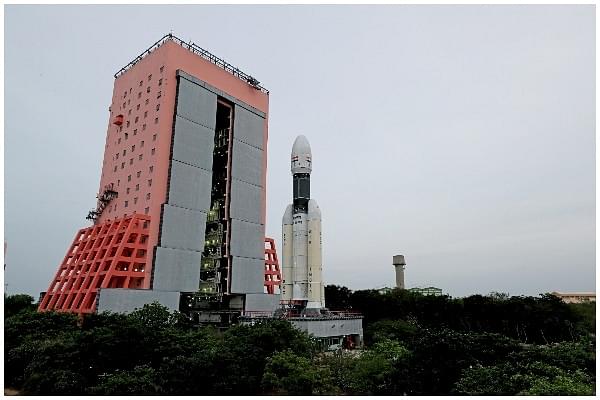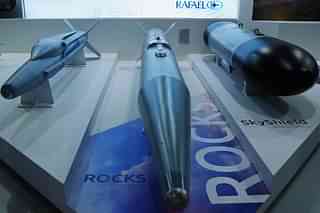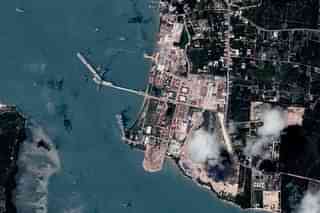Science
This May Be Why ISRO Has Not Launched Chandrayaan-2, And What’s Next
Prakhar Gupta
Jul 16, 2019, 10:55 AM | Updated 10:55 AM IST
Save & read from anywhere!
Bookmark stories for easy access on any device or the Swarajya app.

At the Satish Dhawan Space Centre at Sriharikota, the clocks keeping track of the countdown for the launch of Chandrayaan-2—India’s second moon mission—stopped 56 minutes before the scheduled lift-off of the Geosynchronous Satellite Launch Vehicle (GSLV) Mark-III. The Indian Space Research Organisation (ISRO) had spotted a ‘technical snag’ in the launch vehicle during the pre-launch checks and decided to call off the launch exercising ‘abundant precaution’.
ISRO has not given details, but reports suggest that the technical glitch that led to the postponement of the launch could have been caused during the fueling the launch vehicle’s cryogenic stage. Some other reports have suggested that a cryogenic fuel leak led to the postponement of the launch.
The cryogenic stage, called C25, forms the third stage of GSLV Mark-III. It kicks in after the separation of the Vikas engine-powered liquid-fuelled core, which forms the second stage of the launch vehicle. The cryogenic stage is equipped with a CE-20 cryogenic engine developed indigenously by ISRO. (Read: How ISRO Built Its Largest Cryogenic Engine That Will Put Chandrayaan-2 In Orbit)
A cryogenic engine is designed to make use of fuel or oxidiser that are needed to be refrigerated to remain in a liquid state. And the CE-20 engine uses liquid hydrogen and liquid oxygen as fuel and oxidiser, respectively.
Thrust, or the propulsive force of an engine, depends on the flow of the fuel through it. The faster the flow, the higher is the thrust. Solid fuels are bulky. Gaseous fuels do flow, although not as well as liquid fuels do, which have higher energy. But the fuel that provides the highest exhaust velocity is hydrogen, a gas. When hydrogen burns in the presence of oxygen, the energy released provides an exhaust velocity as high as 4.55 km per second.
But, as we know, gases barely flow (difficult to pump), and the thrust depends on how well the fuel flows. So, to make them as propellants, both hydrogen and oxygen are liquified—liquids flow better. Hydrogen liquefies at 20 kelvin (-253 ºC) and oxygen liquefies at 89 kelvin (-184 ºC). Liquified hydrogen has both the desirable qualities of a fuel: high flowability and high exhaust velocity.
But this arrangement has its share of problems. The liquified hydrogen propellant is stored in a high-pressure fuel tank. But, as Mamata Mukhopadhyay, a professor at the Indian Institute of Technology, Bombay, explains in her book Fundamental of Cryogenic Engineering, the seal of the fuel tank may lose the ability to maintain the seal at cryogenic temperatures. And hydrogen, given the small size of its molecules, can easily leak if the seal of the fuel tank gets loose.
“Hydrogen, being the smallest element, has the tendency to leak past seals or materials,” the professor writes in her book.
And a hydrogen leak can prove disastrous for the launch vehicle. If hydrogen leaks into an oxidising environment, it can ignite a catastrophic explosion.
It is important to remember that ISRO has not confirmed that there was a fuel leak. However, if ISRO’s tweets are to be believed, the agency had finished fueling the cryogenic engine before the countdown was put on hold. Therefore, it could well be a fuel leak that forced ISRO to postpone the launch.
In 2013, ISRO had called off the launch of satellite GSAT-14 after a leak was observed in the second stage of the launch vehicle. The launch was cancelled with only a little over an hour left for the lift-off. In 2008, a fuel leak threatened to derail the launch of India’s first moon mission, Chandrayaan-1.
If there was a fuel leak, the chances of ISRO being able to launch Chandrayaan-2 this month appear bleak. ISRO does have a launch window every day of this month, but after 16 July, the duration of this window will go down to just one minute every day, ISRO Chairman K Sivan had said at a press conference in May. Between 9 and 16 July, the duration of the launch window was 10 minutes.
However, ISRO may not be able to turn around the rocket soon enough. According to reports, which quote unnamed officials, the first thing that ISRO will do is remove fuel from the rocket. After this, the launch vehicle will be taken for tests to check for problems. The entire process may take around 10 days.
The launch window depends on the position of the moon vis-a-vis the Earth. After being put into an elliptical orbit around the earth by the launch vehicle, the lunar module will have to find its way into the lunar transfer trajectory. It is this trajectory that will take the lunar module near the moon’s orbit. When the lunar module reaches the moon’s orbit, it has to be captured by the moon’s gravity, which means that it has to be timed. (Read: How ISRO’s Chandrayaan-2 Will Travel From The Earth To The Moon)
If ISRO misses the launch windows that are available this month, the next opportunity to send Chandrayaan-2 to the moon may arrive in September.
This post will be updated when more information is available.
Save & read from anywhere!
Bookmark stories for easy access on any device or the Swarajya app.
Prakhar Gupta is a senior editor at Swarajya. He tweets @prakharkgupta.
Introducing ElectionsHQ + 50 Ground Reports Project
The 2024 elections might seem easy to guess, but there are some important questions that shouldn't be missed.
Do freebies still sway voters? Do people prioritise infrastructure when voting? How will Punjab vote?
The answers to these questions provide great insights into where we, as a country, are headed in the years to come.
Swarajya is starting a project with an aim to do 50 solid ground stories and a smart commentary service on WhatsApp, a one-of-a-kind. We'd love your support during this election season.
Click below to contribute.





